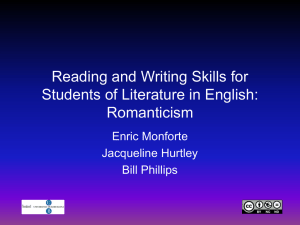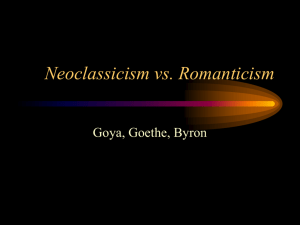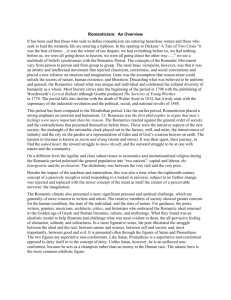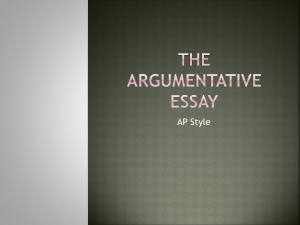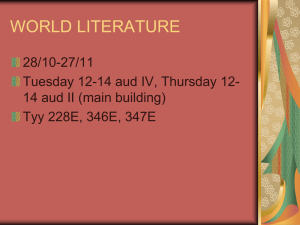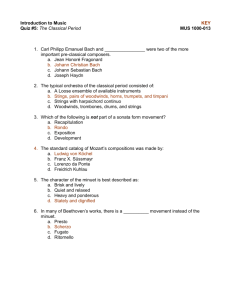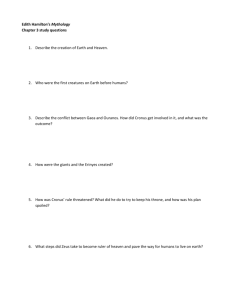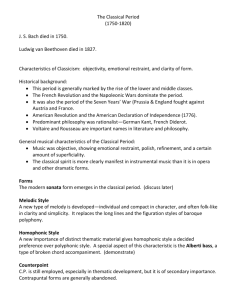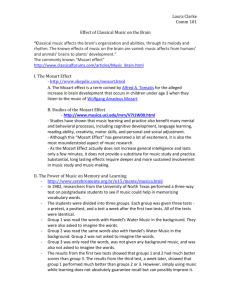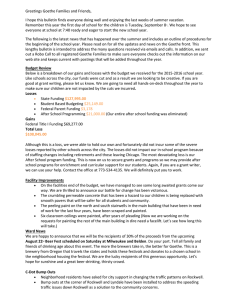German Classicism and Romanticism: Goethe and Mozart Storm
advertisement
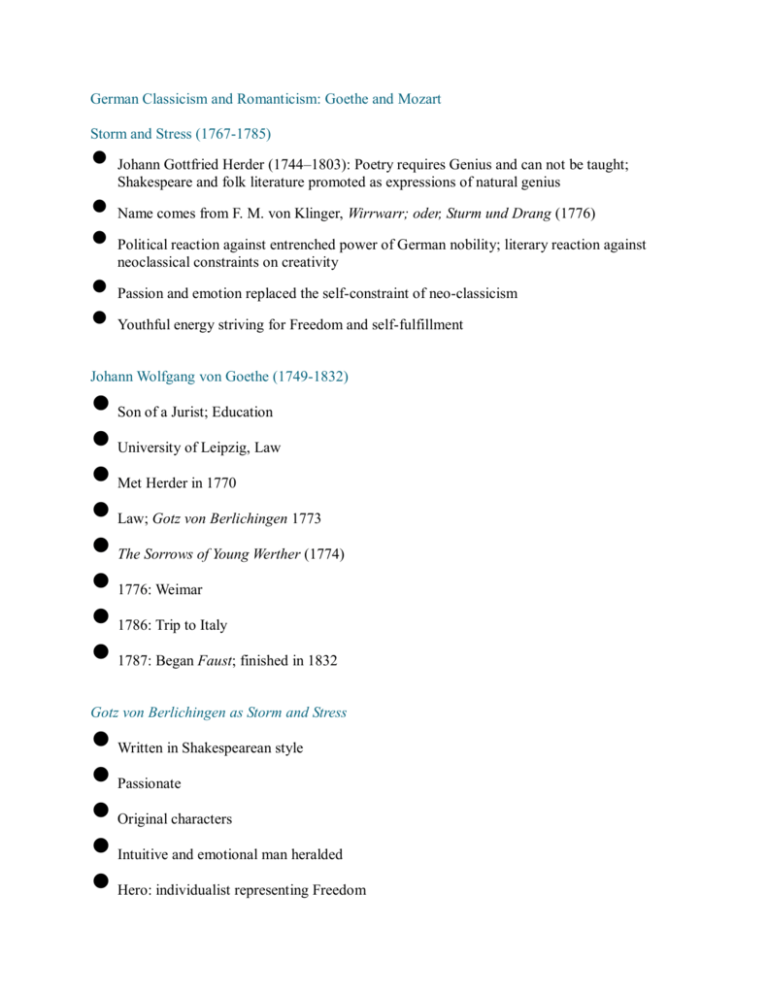
German Classicism and Romanticism: Goethe and Mozart Storm and Stress (1767-1785) Johann Gottfried Herder (1744–1803): Poetry requires Genius and can not be taught; Shakespeare and folk literature promoted as expressions of natural genius Name comes from F. M. von Klinger, Wirrwarr; oder, Sturm und Drang (1776) Political reaction against entrenched power of German nobility; literary reaction against neoclassical constraints on creativity Passion and emotion replaced the self-constraint of neo-classicism Youthful energy striving for Freedom and self-fulfillment Johann Wolfgang von Goethe (1749-1832) Son of a Jurist; Education University of Leipzig, Law Met Herder in 1770 Law; Gotz von Berlichingen 1773 The Sorrows of Young Werther (1774) 1776: Weimar 1786: Trip to Italy 1787: Began Faust; finished in 1832 Gotz von Berlichingen as Storm and Stress Written in Shakespearean style Passionate Original characters Intuitive and emotional man heralded Hero: individualist representing Freedom Prometheus Speaks, 1773 http://www.everypoet.com/archive/poetry/Goethe/goethe_prometheus.htm Prometheus as a Romantic symbol of the Human: passionate, suffering, life affirming, “A race resembling me, To suffer, to weep, To enjoy, to be glad, “ Prometheus as a symbol of Freedom and rebellion against authority Ganymede http://www.everypoet.com/archive/poetry/Goethe/goethe_ganymede.htm Ganymede as a symbol of youthful beauty Natural world of springtime inspires Physical and Homoerotic love deemphasized Here Zeus is the object of human inspiration and love and a positive force rather than the force of Tyranny as in Prometheus Weimar Period (1788-1805) Named after his residence in Weimar court Initiated by a trip to Italy, 1786-88 Influence of Greek classical literature Aspired to greater objectivity Attempt to convey a Humanistic ethic After Italy, at 39, a 23 year old girl, Christiane Vulpius, moved into his home; common law marriage. The Godlike http://www.everypoet.com/archive/poetry/Goethe/goethe_the_godlike.htm Man as Noble but not Divine Our ethical nobility is what separates us from other animals Nature is neither Good nor Evil Humans are subject to external Forces Despite this, we have free will; and through our will can give lasting meaning to life Justice prefigures Divinity Wolfgang Amadeus Mozart (1756-1791) Pupil of Haydn Austria Child prodigy Fused Italian and German schools of Music Diverse musical composition Operas Requiem Classical Music 1750-1825 Calm, light, balanced, simplified, Joseph Haydn and Wolfgang Amadeus Mozart Short symmetrical phrases Seeking structural symmetry Piano replaces harpsichord and violin the viol Public performances for middle class Symphony orchestra ideal Classical Music “In the eighteenth century, composers were primarily interested in forms, melodies, and harmonies that provided an easily-audible structure for the music. In the first movement of a sonata, for example, each prescribed section would likely be where it belonged, the appropriate length, and in the proper key.” http://cnx.org/content/m11606/latest/ 19th century Romantic Music “…the "rules" that provided this structure were more likely to be seen as boundaries and limits that needed to be explored, tested, and even defied. For example, the first movement of a Romantic sonata may contain all the expected sections as the music develops, but the composer might feel free to expand or contract some sections or to add unexpected interruptions between them. The harmonies in the movement might lead away from and back to the tonic just as expected, but they might wander much further afield than a Classical sonata would, before they make their final return.” Mozart, from Baroque to Classical http://oyc.yale.edu/music/musi-112/lecture-17 Professor Wright explains the difference in sound between Baroque and Classical Mozart defined by: Balance and Proportion Antecedent and Consequent phases—balance Simple materials: Major Triad, Scale, Dominant Seventh (spans seven letter names) Wild Swings of Mood In Romantic style, complexity grows as a way of conveying more powerful emotion Summary German Romanticism begins with the Sturm und Strang movement High Passion and Freedom Goethe’s Romanticism matures into Weimar Classicism Music in the second half of the 17th century is Classical; it will transition to Romantic in the 19th century Music is evolving in harmonic and emotional complexity
